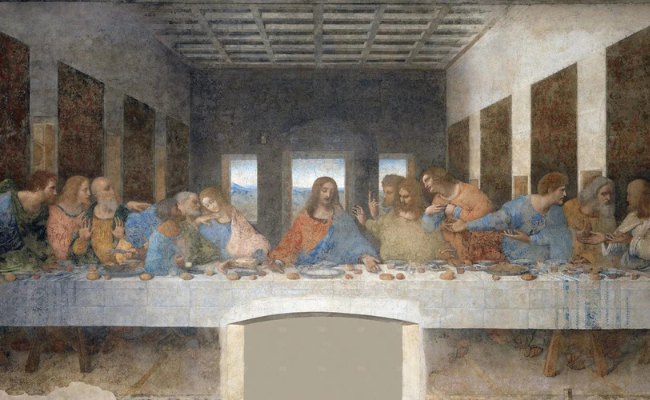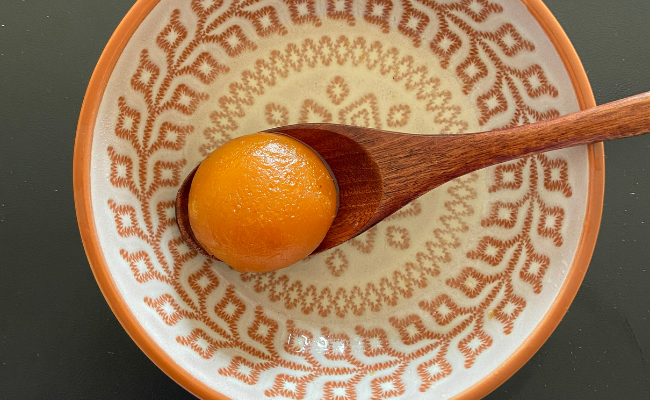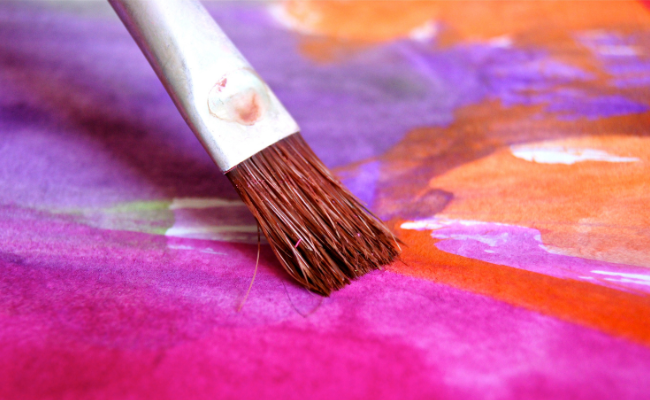Scientists Identify Key Ingredient in Da Vinci’s Paintings
Leonardo da Vinci is well-known as one of the greatest artists of all time, with his works captivating audiences for centuries.
But have you ever wondered what made his paintings so special? A team of scientists has recently uncovered a key ingredient in Da Vinci’s masterpieces that could shed light on his artistic genius.
According to new research, he might have used proteins like an egg yolk in many of his works.
This discovery provides a unique insight into the techniques and materials he used to create his stunning pieces.
Importance of Identifying the Materials used in His Paintings
There are several reasons why identifying the materials used in Leonardo da Vinci’s paintings is vital.
"Old Masters" such as Leonardo da Vinci, Sandro Botticelli and Rembrandt may have used proteins, especially egg yolk, in their oil paintings, according to a new study. https://t.co/Akx2V27EsN
— CNN International (@cnni) March 29, 2023
Firstly, it allows art historians and conservators to gain insights into his techniques and processes, providing a deeper understanding of his artistic style and the cultural context in which he worked.
Secondly, knowledge of the materials used can assist in preserving and conserving Da Vinci’s works.
Different materials have unique properties and react differently over time, and this understanding can inform decisions about how to care for and restore his paintings for future generations.
Lastly, identifying the materials used in Da Vinci’s paintings can aid in verifying their authenticity.
You may also like: Our Choices: The Top 10 Famous Paintings Ever Created
If an artwork contains materials or techniques unavailable during Da Vinci’s lifetime, it may be a forgery or copy rather than an original work by the master.
The Study

Photo Credit: Britannica.com
The study conducted by scientists revealed that samples from Leonardo da Vinci’s paintings contained significant amounts of egg yolk, specifically the protein ovalbumin, a common ingredient in tempera paint.
The researchers believe that Da Vinci used egg yolk as a binding agent to create a stable and durable paint film that could withstand the aging and environmental factors.
According to research author Ophélie Ranquet from the Institute of Mechanical Process Engineering and Mechanics at the Karlsruhe Institute of Technology in Germany, “There are very few written sources about this, and no scientific work has been done before to investigate the subject in such depth.”
“Our results show that even with a very small amount of egg yolk, you can achieve an amazing change of properties in the oil paint, demonstrating how it might have been beneficial for the artists.”
Egg Yolk in Renaissance Painting
During the Renaissance period, egg yolk was commonly used as a painting medium to create rich, vibrant colors.
Using egg yolk as a medium dates back to ancient times and was perfected during the Renaissance. The process is also known as tempera painting.
The process involved mixing egg yolk with pigments to create a paint that applies to various surfaces. These include wood, canvas, and paper.
The egg yolk acted as a binding agent, allowing the pigments to adhere to the surface and creating a durable, long-lasting finish.
One of the advantages of using egg yolk as a medium was that it allowed for greater control over the opacity and consistency of the paint.
Artists could adjust the ratio of egg yolk to pigment to create the desired effect, whether it be a thick, opaque layer of color or a translucent glaze.
Renaissance artists, including Leonardo da Vinci, Raphael, and Sandro Botticelli, used egg yolk tempera extensively.
It was particularly well-suited for creating highly detailed works. The delicate brush strokes allowed intricate details to be rendered precisely.
Da Vinci’s Technique
Leonardo da Vinci employed various techniques and materials in his paintings. These include using egg yolk as a binding agent for his paints.
During the Renaissance, egg yolk which is abundant in proteins and fats. It was commonly employed as a binding agent for pigments.
It provided a durable and flexible medium for painting. Da Vinci probably employed egg yolk in his paintings for various reasons.
Firstly, egg yolk acts as a natural emulsifier, which assists in blending different pigments and achieving a smooth, uniform texture.
This feature would have been precious for Da Vinci. He was renowned for his meticulous attention to detail. Da Vinci is also popular for his ability to create highly realistic depictions of light and shadow.
Using egg yolk in Da Vinci’s paintings was likely both practical and symbolic, demonstrating his technical abilities and artistic vision.
Implications and Future Research
The discovery that Leonardo da Vinci used egg yolk as a binding agent in his paintings has significant implications for art history and preservation.
This information sheds light on the technical processes and materials used during the Renaissance. It provides valuable insight for art historians and conservators.
Moreover, this discovery can stimulate further research into using egg yolk and other natural materials in contemporary art conservation and restoration.
Through experimentation with these materials, experts may develop new techniques and methods to preserve and restore works of art.
Related Articles
Final Thoughts
The discovery that egg yolk was a key ingredient in Leonardo da Vinci’s paintings provides valuable insight into the technical processes and materials used during the Renaissance period.
The use of egg yolk as a binding agent in painting was common during this time. However, its role in Da Vinci’s works was previously unknown.
The study of Da Vinci’s paintings and techniques is ongoing. This discovery adds to the vast body of knowledge surrounding this iconic artist.
By understanding the specific materials and methods that Da Vinci used, we can gain a deeper appreciation for his art. We can also understand the historical context in which he created it.



